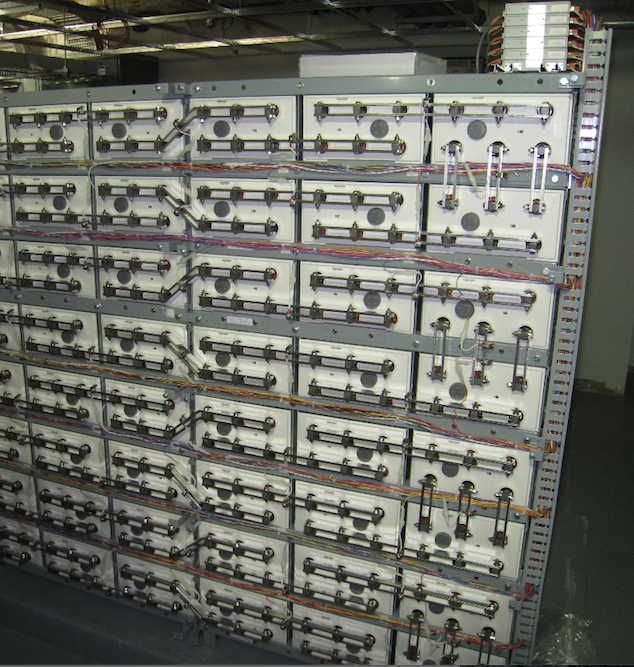Early Detection of VRLA Thermal Runaway by Accurately Measuring Float Current.
If detecting changes in Float Current is an important part of your monitoring system, then it’s worth closely examining system uncertainty to ensure all measurements are meaningful. An additional sensor to accurately measure float currents can be very inexpensive insurance. OSI’s new LDCL-xxx sensor employs unique technology to achieve accurate and repeatable measurement of 0.5 to 1 amp DC float currents, even when subjected to 600 amp surges. WATCH VIDEO HERE
Both Accuracy and Resolution are Critical Issues
Stationary Battery Monitoring Systems measure the charge and discharge currents to optimize and predict VRLA cell life. These systems also measure the float current between the two larger flow states to detect “…an increase in Charge current in normal operation that is not the cause of a recent discharge, or rectifier/charger adjustment issue”1. Peter DeMar identified accuracy and resolution as critical issues and stipulated that repeatable measurements in the 0.5 to 1.0-Amp DC range would be required. That sounds straightforward – until we examine the dynamics.
You Need An Accurate Field Sensor for Low Level Measurements
If the discharge current is 600-Amps, but we must measure 0.5 amps with repeatable precision, then we are specifying a 1000:1 dynamic range. This is achievable with lab instrumentation, but that hardly seems appropriate (or economic) for what is generally an unattended field installation. There also remains the issue of accuracy and resolution at these low levels. Download Spec Sheet Here
An Additional Sensor Specifically for Float Current
One solution is to incorporate an additional sensor sized for the float current. This would be a nominal 5-Amp DC current sensor; however, the device must also withstand an overload of up to 120 X rated because routine discharge flows of that magnitude can introduce a more insidious error – Residual Magnetism.
The Offset Challenge
Large DC currents can create a “set” within the device’s magnetic core that appears as a semi-fixed offset in the current measurement. The magnitude of the offset varies with the size of the surge, the residual present before the surge, and other factors. Worse, the laws of physics specify that a DC current inrush in the opposite direction does not remove the offset. It simply changes its direction and possibly magnitude, again, in a less-than-predictable manner. In other words, the offset is difficult to predict with any confidence.
Fortunately, OSI technology has reduced this uncertainty to only ± 2-4% of full-scale error, or 0.1 to 0.2 amps – well within DeMar’s specification.
Contact
Kathy Roush
Ohio Semitronics, Inc.
[email protected]
614.777.1005, ext. 338
References
- DeBar, P. “Thermal Runaway: The Past, Present and Future.” Presented at INFOBATT 2010. April 11-13, 2010.



